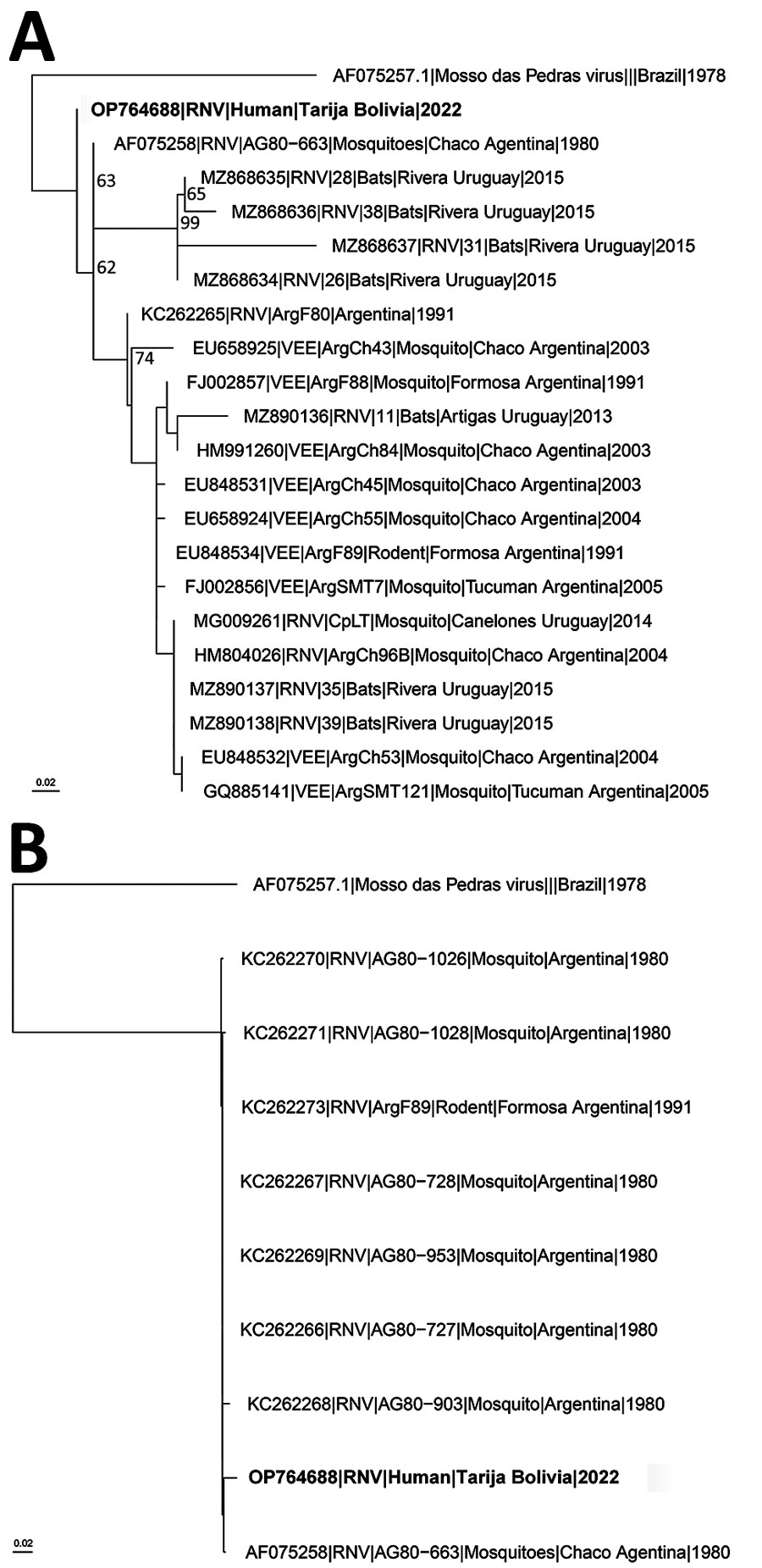Volume 29, Number 8—August 2023
Research Letter
Rio Negro Virus Infection, Bolivia, 2021
Figure

Figure. Inferred phylogenetic relationships of Rio Negro viruses collected from mosquitoes, bats, and rodents in South America and the human-derived RNV sequence described in this report from Tarija, Bolivia (bold text). A) Phylogenetic tree made with an alignment of partial nsP4 sequences of Rio Negro viruses. Mossa das Pedras virus is included as an outgroup. B) Phylogenetic tree made with an alignment of partial E3/GP2 sequences of Rio Negro viruses. Mossa das Pedras virus is included as an outgroup. GenBank accession numbers are provided. Scale bars indicate substitutions per site.
1These authors contributed equally to this article.
2These senior authors contributed equally to this article.
Page created: June 08, 2023
Page updated: July 20, 2023
Page reviewed: July 20, 2023
The conclusions, findings, and opinions expressed by authors contributing to this journal do not necessarily reflect the official position of the U.S. Department of Health and Human Services, the Public Health Service, the Centers for Disease Control and Prevention, or the authors' affiliated institutions. Use of trade names is for identification only and does not imply endorsement by any of the groups named above.